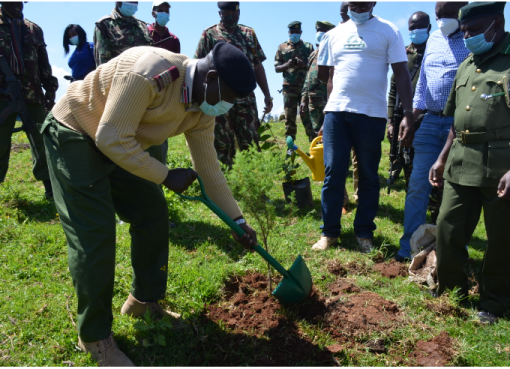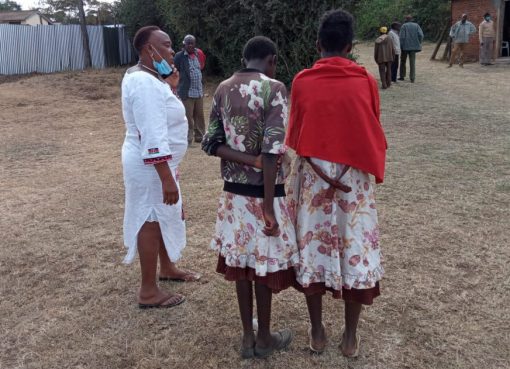The burden of drug-resistant TB (DR-TB) increased by 3 per cent between 2020 and 2021, with 450 000 new cases of rifampicin-resistant TB (RR-TB) in 2021, at the height of the COVID-19 pandemic.
Rifampicin resistance is resistance to other first-line anti-TB drugs and has been an area of growing concern to human health worldwide and poses a threat to the control of TB.
World Health Organization’s 2022 Global TB report released last week says this is the first time in many years an increase has been reported in the number of people falling ill with drug-resistant TB.
TB services are among many others disrupted by the COVID-19 pandemic in 2021, but its impact on the TB response has been particularly severe.
According to WHO, the ongoing conflicts across Eastern Europe, Africa and the Middle East have further exacerbated the situation for vulnerable populations.
WHO Director-General Dr. Tedros Adhanom Ghebreyesus, speaking during the release of the TB report said that if the COVID-19 pandemic has taught us anything, it is that the world can overcome severe health threats.
“With solidarity, determination, innovation, and the equitable use of tools, and the lessons learnt, it is time to put a stop to this long-time killer. Working together, we can end TB,” he remarked.
The report notes a decline in global spending on essential TB services from Sh728.4 billion (USD 6 billion) in 2019 to Sh 655.8 billion (USD 5.4 billion) in 2021, which is less than half of the global target of Sh 1.57 trillion (USD13 billion) annually by 2022.
Director of WHO’s Global TB Programme Dr. Tereza Kasaeva, said the report provides important new evidence and makes a strong case for the need to join forces and urgently redouble efforts to get the TB response back on track to reach TB targets and save lives.
“This will be an essential tool for countries, partners, and civil society as they review progress and prepare for the 2nd UN High-Level Meeting on TB mandated for 2023,” said Dr. Kasaeva
Despite stalling progress due to COVID-19, there are some successes according to WHO. For instance, seven high TB burden countries in the region namely Kenya, Ethiopia, Lesotho, Namibia, South Africa, the United Republic of Tanzania, and Zambia have reached or surpassed the 2020 milestone of a 20 per cent reduction in the TB incidence rate.
According to WHO, Countries are also increasing the uptake of new tools and guidance recommended by WHO, resulting in early access to TB prevention and care and better outcomes.
The proportion of people diagnosed with TB who were initially tested with a rapid diagnostic increased from 33 per cent in 2020 to 38 per cent in 2021.
In Kenya’s case, the Global report estimates that the proportion of TB cases with MDR/RR-TB in 2021 stood at 0.85 per cent for new cases while the previously treated cases were at 4.2 per cent.
On TB cases notification, 2021 saw those tested with rapid diagnostics stand at 65 per cent, with known HIV status at 97 per cent, children aged between 0 -14 years, at 9 per cent, women aged 15 years and above 30 per cent while men at 61 per cent with the total cases notified standing at 77,854.
The report reiterates its call for countries to put in place urgent measures to restore access to essential TB services and further calls for increased investments, multisectoral action to address the broader determinants that influence TB epidemics and their socioeconomic impact as well as the need for new diagnostics, drugs, and vaccines.
To intensify vaccine development, building on lessons from the pandemic, WHO will be convening a high-level summit in early 2023.
The 2022 report features data on trends of disease and the response to the epidemic from 215 countries and areas, including all 194 WHO Member States.
After COVID-19, TB is the second deadliest infectious killer that is caused by bacteria that most often affect the lungs. It can spread when people who are sick with TB expel bacteria into the air for example, by coughing.
While there is TB in every part of the world, Kenya is among 30 countries that carry the highest burden with the others being Angola, Bangladesh, Brazil, the Central African Republic, China, Congo, the Democratic People’s Republic of Korea, Democratic Republic of Congo, Ethiopia, Gabon, India, Indonesia, Lesotho, Liberia, Mongolia, Mozambique, Myanmar, Namibia, Nigeria, Pakistan, Papua New Guinea, Philippines, Sierra Leone, South Africa, Thailand, Uganda, United Republic of Tanzania, Viet Nam and Zambia.
By Wangari Ndirangu




